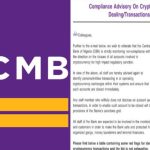Google is set to begin deleting inactive Photos and Gmail accounts starting next week, on December 1st. This move, initially announced in May, is part of a planned initiative by the tech giant.
Google’s VP of product management, Ruth Kricheli, emphasized the necessity of this action as a crucial security measure. According to Kricheli, accounts inactive for two years are at a higher risk of compromise due to outdated passwords, lack of two-factor authentication, and fewer security checks.
Content Wipeout for Dormant Accounts
Accounts facing deletion will have all associated content erased, including files from Google Drive, Google Photos, and Docs.
The Importance of 2-Step Verification
An internal analysis by Google reveals that abandoned accounts are at least 10 times less likely to have 2-step verification set up compared to active accounts. This vulnerability exposes dormant accounts to potential misuse, ranging from identity theft to becoming a vector for unwanted or malicious content like spam.
Gmail’s Popularity and Scam Risks
Gmail’s Massive User Base As of 2019, Gmail boasts 1.5 billion global active users, making it one of the most widely used email services. Given its popularity, scammers often target Gmail users.
Closing Dormant Accounts for Name and Space Free-Up
To ensure efficient use of resources, Google aims to close dormant accounts and free up names and storage space. While specific figures on the number of inactive accounts are undisclosed, the sheer size of the user base suggests a substantial amount of storage potentially being used for inactive accounts.
How to Protect Your Account
Exemptions from Deletion
Certain users and use cases are exempt from deletion. Accounts linked to the purchase of a Google product or subscription, such as extra storage space, and organizational accounts will be spared. It’s crucial to note that this policy applies exclusively to personal Google accounts.
Google is set to begin deleting inactive Photos and Gmail accounts starting next week, on December 1st. This move, initially announced in May, is part of a planned initiative by the tech giant.
Google’s VP of product management, Ruth Kricheli, emphasized the necessity of this action as a crucial security measure. According to Kricheli, accounts inactive for two years are at a higher risk of compromise due to outdated passwords, lack of two-factor authentication, and fewer security checks.
Content Wipeout for Dormant Accounts
Accounts facing deletion will have all associated content erased, including files from Google Drive, Google Photos, and Docs.
The Importance of 2-Step Verification
An internal analysis by Google reveals that abandoned accounts are at least 10 times less likely to have 2-step verification set up compared to active accounts. This vulnerability exposes dormant accounts to potential misuse, ranging from identity theft to becoming a vector for unwanted or malicious content like spam.
Gmail’s Popularity and Scam Risks
Gmail’s Massive User Base As of 2019, Gmail boasts 1.5 billion global active users, making it one of the most widely used email services. Given its popularity, scammers often target Gmail users.
Closing Dormant Accounts for Name and Space Free-Up
To ensure efficient use of resources, Google aims to close dormant accounts and free up names and storage space. While specific figures on the number of inactive accounts are undisclosed, the sheer size of the user base suggests a substantial amount of storage potentially being used for inactive accounts.
How to Protect Your Account
Exemptions from Deletion
Certain users and use cases are exempt from deletion. Accounts linked to the purchase of a Google product or subscription, such as extra storage space, and organizational accounts will be spared. It’s crucial to note that this policy applies exclusively to personal Google accounts.
Google is set to begin deleting inactive Photos and Gmail accounts starting next week, on December 1st. This move, initially announced in May, is part of a planned initiative by the tech giant.
Google’s VP of product management, Ruth Kricheli, emphasized the necessity of this action as a crucial security measure. According to Kricheli, accounts inactive for two years are at a higher risk of compromise due to outdated passwords, lack of two-factor authentication, and fewer security checks.
Content Wipeout for Dormant Accounts
Accounts facing deletion will have all associated content erased, including files from Google Drive, Google Photos, and Docs.
The Importance of 2-Step Verification
An internal analysis by Google reveals that abandoned accounts are at least 10 times less likely to have 2-step verification set up compared to active accounts. This vulnerability exposes dormant accounts to potential misuse, ranging from identity theft to becoming a vector for unwanted or malicious content like spam.
Gmail’s Popularity and Scam Risks
Gmail’s Massive User Base As of 2019, Gmail boasts 1.5 billion global active users, making it one of the most widely used email services. Given its popularity, scammers often target Gmail users.
Closing Dormant Accounts for Name and Space Free-Up
To ensure efficient use of resources, Google aims to close dormant accounts and free up names and storage space. While specific figures on the number of inactive accounts are undisclosed, the sheer size of the user base suggests a substantial amount of storage potentially being used for inactive accounts.
How to Protect Your Account
Exemptions from Deletion
Certain users and use cases are exempt from deletion. Accounts linked to the purchase of a Google product or subscription, such as extra storage space, and organizational accounts will be spared. It’s crucial to note that this policy applies exclusively to personal Google accounts.
Google is set to begin deleting inactive Photos and Gmail accounts starting next week, on December 1st. This move, initially announced in May, is part of a planned initiative by the tech giant.
Google’s VP of product management, Ruth Kricheli, emphasized the necessity of this action as a crucial security measure. According to Kricheli, accounts inactive for two years are at a higher risk of compromise due to outdated passwords, lack of two-factor authentication, and fewer security checks.
Content Wipeout for Dormant Accounts
Accounts facing deletion will have all associated content erased, including files from Google Drive, Google Photos, and Docs.
The Importance of 2-Step Verification
An internal analysis by Google reveals that abandoned accounts are at least 10 times less likely to have 2-step verification set up compared to active accounts. This vulnerability exposes dormant accounts to potential misuse, ranging from identity theft to becoming a vector for unwanted or malicious content like spam.
Gmail’s Popularity and Scam Risks
Gmail’s Massive User Base As of 2019, Gmail boasts 1.5 billion global active users, making it one of the most widely used email services. Given its popularity, scammers often target Gmail users.
Closing Dormant Accounts for Name and Space Free-Up
To ensure efficient use of resources, Google aims to close dormant accounts and free up names and storage space. While specific figures on the number of inactive accounts are undisclosed, the sheer size of the user base suggests a substantial amount of storage potentially being used for inactive accounts.
How to Protect Your Account
Exemptions from Deletion
Certain users and use cases are exempt from deletion. Accounts linked to the purchase of a Google product or subscription, such as extra storage space, and organizational accounts will be spared. It’s crucial to note that this policy applies exclusively to personal Google accounts.
Google is set to begin deleting inactive Photos and Gmail accounts starting next week, on December 1st. This move, initially announced in May, is part of a planned initiative by the tech giant.
Google’s VP of product management, Ruth Kricheli, emphasized the necessity of this action as a crucial security measure. According to Kricheli, accounts inactive for two years are at a higher risk of compromise due to outdated passwords, lack of two-factor authentication, and fewer security checks.
Content Wipeout for Dormant Accounts
Accounts facing deletion will have all associated content erased, including files from Google Drive, Google Photos, and Docs.
The Importance of 2-Step Verification
An internal analysis by Google reveals that abandoned accounts are at least 10 times less likely to have 2-step verification set up compared to active accounts. This vulnerability exposes dormant accounts to potential misuse, ranging from identity theft to becoming a vector for unwanted or malicious content like spam.
Gmail’s Popularity and Scam Risks
Gmail’s Massive User Base As of 2019, Gmail boasts 1.5 billion global active users, making it one of the most widely used email services. Given its popularity, scammers often target Gmail users.
Closing Dormant Accounts for Name and Space Free-Up
To ensure efficient use of resources, Google aims to close dormant accounts and free up names and storage space. While specific figures on the number of inactive accounts are undisclosed, the sheer size of the user base suggests a substantial amount of storage potentially being used for inactive accounts.
How to Protect Your Account
Exemptions from Deletion
Certain users and use cases are exempt from deletion. Accounts linked to the purchase of a Google product or subscription, such as extra storage space, and organizational accounts will be spared. It’s crucial to note that this policy applies exclusively to personal Google accounts.
Google is set to begin deleting inactive Photos and Gmail accounts starting next week, on December 1st. This move, initially announced in May, is part of a planned initiative by the tech giant.
Google’s VP of product management, Ruth Kricheli, emphasized the necessity of this action as a crucial security measure. According to Kricheli, accounts inactive for two years are at a higher risk of compromise due to outdated passwords, lack of two-factor authentication, and fewer security checks.
Content Wipeout for Dormant Accounts
Accounts facing deletion will have all associated content erased, including files from Google Drive, Google Photos, and Docs.
The Importance of 2-Step Verification
An internal analysis by Google reveals that abandoned accounts are at least 10 times less likely to have 2-step verification set up compared to active accounts. This vulnerability exposes dormant accounts to potential misuse, ranging from identity theft to becoming a vector for unwanted or malicious content like spam.
Gmail’s Popularity and Scam Risks
Gmail’s Massive User Base As of 2019, Gmail boasts 1.5 billion global active users, making it one of the most widely used email services. Given its popularity, scammers often target Gmail users.
Closing Dormant Accounts for Name and Space Free-Up
To ensure efficient use of resources, Google aims to close dormant accounts and free up names and storage space. While specific figures on the number of inactive accounts are undisclosed, the sheer size of the user base suggests a substantial amount of storage potentially being used for inactive accounts.
How to Protect Your Account
Exemptions from Deletion
Certain users and use cases are exempt from deletion. Accounts linked to the purchase of a Google product or subscription, such as extra storage space, and organizational accounts will be spared. It’s crucial to note that this policy applies exclusively to personal Google accounts.
Google is set to begin deleting inactive Photos and Gmail accounts starting next week, on December 1st. This move, initially announced in May, is part of a planned initiative by the tech giant.
Google’s VP of product management, Ruth Kricheli, emphasized the necessity of this action as a crucial security measure. According to Kricheli, accounts inactive for two years are at a higher risk of compromise due to outdated passwords, lack of two-factor authentication, and fewer security checks.
Content Wipeout for Dormant Accounts
Accounts facing deletion will have all associated content erased, including files from Google Drive, Google Photos, and Docs.
The Importance of 2-Step Verification
An internal analysis by Google reveals that abandoned accounts are at least 10 times less likely to have 2-step verification set up compared to active accounts. This vulnerability exposes dormant accounts to potential misuse, ranging from identity theft to becoming a vector for unwanted or malicious content like spam.
Gmail’s Popularity and Scam Risks
Gmail’s Massive User Base As of 2019, Gmail boasts 1.5 billion global active users, making it one of the most widely used email services. Given its popularity, scammers often target Gmail users.
Closing Dormant Accounts for Name and Space Free-Up
To ensure efficient use of resources, Google aims to close dormant accounts and free up names and storage space. While specific figures on the number of inactive accounts are undisclosed, the sheer size of the user base suggests a substantial amount of storage potentially being used for inactive accounts.
How to Protect Your Account
Exemptions from Deletion
Certain users and use cases are exempt from deletion. Accounts linked to the purchase of a Google product or subscription, such as extra storage space, and organizational accounts will be spared. It’s crucial to note that this policy applies exclusively to personal Google accounts.
Google is set to begin deleting inactive Photos and Gmail accounts starting next week, on December 1st. This move, initially announced in May, is part of a planned initiative by the tech giant.
Google’s VP of product management, Ruth Kricheli, emphasized the necessity of this action as a crucial security measure. According to Kricheli, accounts inactive for two years are at a higher risk of compromise due to outdated passwords, lack of two-factor authentication, and fewer security checks.
Content Wipeout for Dormant Accounts
Accounts facing deletion will have all associated content erased, including files from Google Drive, Google Photos, and Docs.
The Importance of 2-Step Verification
An internal analysis by Google reveals that abandoned accounts are at least 10 times less likely to have 2-step verification set up compared to active accounts. This vulnerability exposes dormant accounts to potential misuse, ranging from identity theft to becoming a vector for unwanted or malicious content like spam.
Gmail’s Popularity and Scam Risks
Gmail’s Massive User Base As of 2019, Gmail boasts 1.5 billion global active users, making it one of the most widely used email services. Given its popularity, scammers often target Gmail users.
Closing Dormant Accounts for Name and Space Free-Up
To ensure efficient use of resources, Google aims to close dormant accounts and free up names and storage space. While specific figures on the number of inactive accounts are undisclosed, the sheer size of the user base suggests a substantial amount of storage potentially being used for inactive accounts.
How to Protect Your Account
Exemptions from Deletion
Certain users and use cases are exempt from deletion. Accounts linked to the purchase of a Google product or subscription, such as extra storage space, and organizational accounts will be spared. It’s crucial to note that this policy applies exclusively to personal Google accounts.














